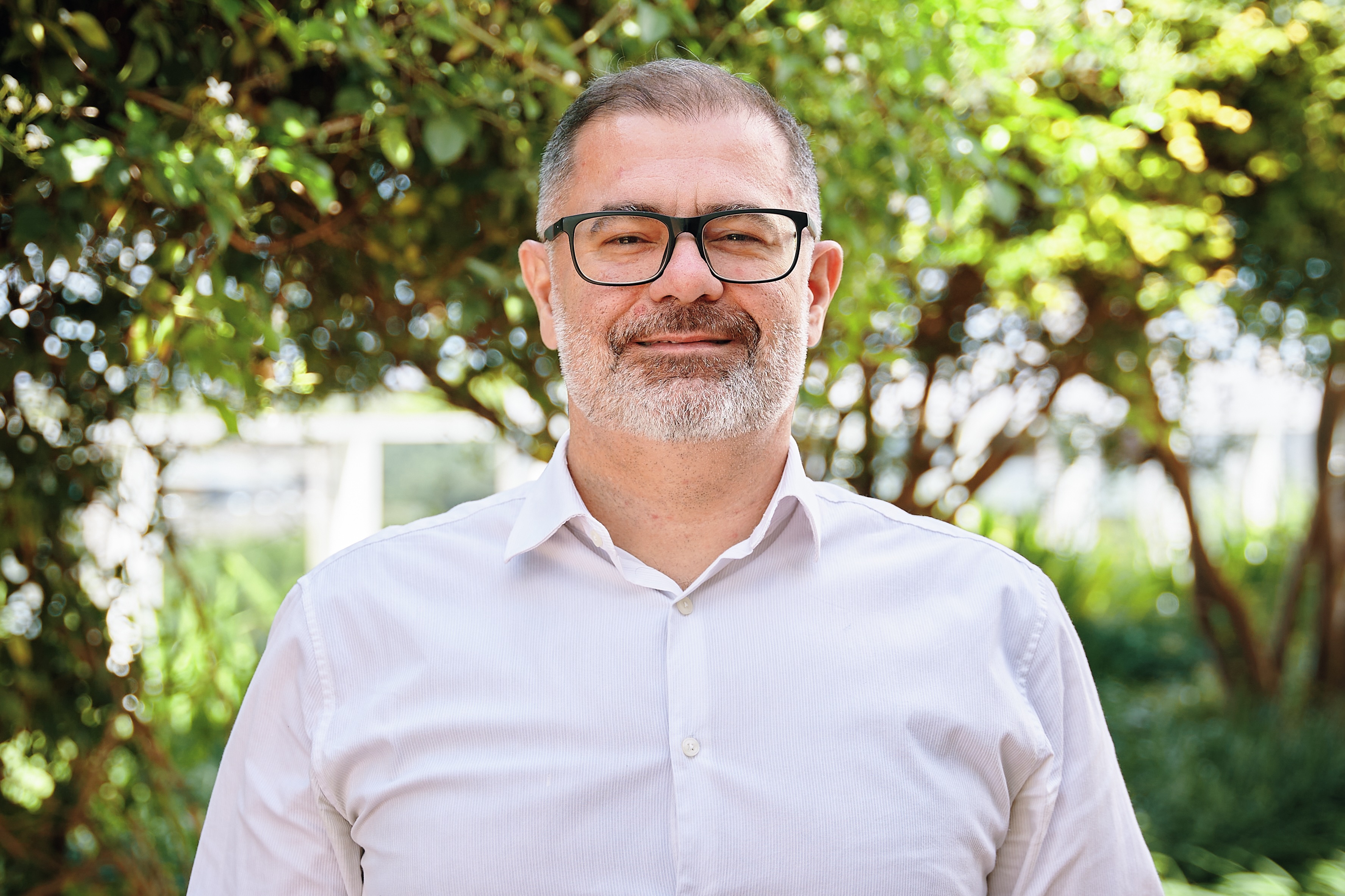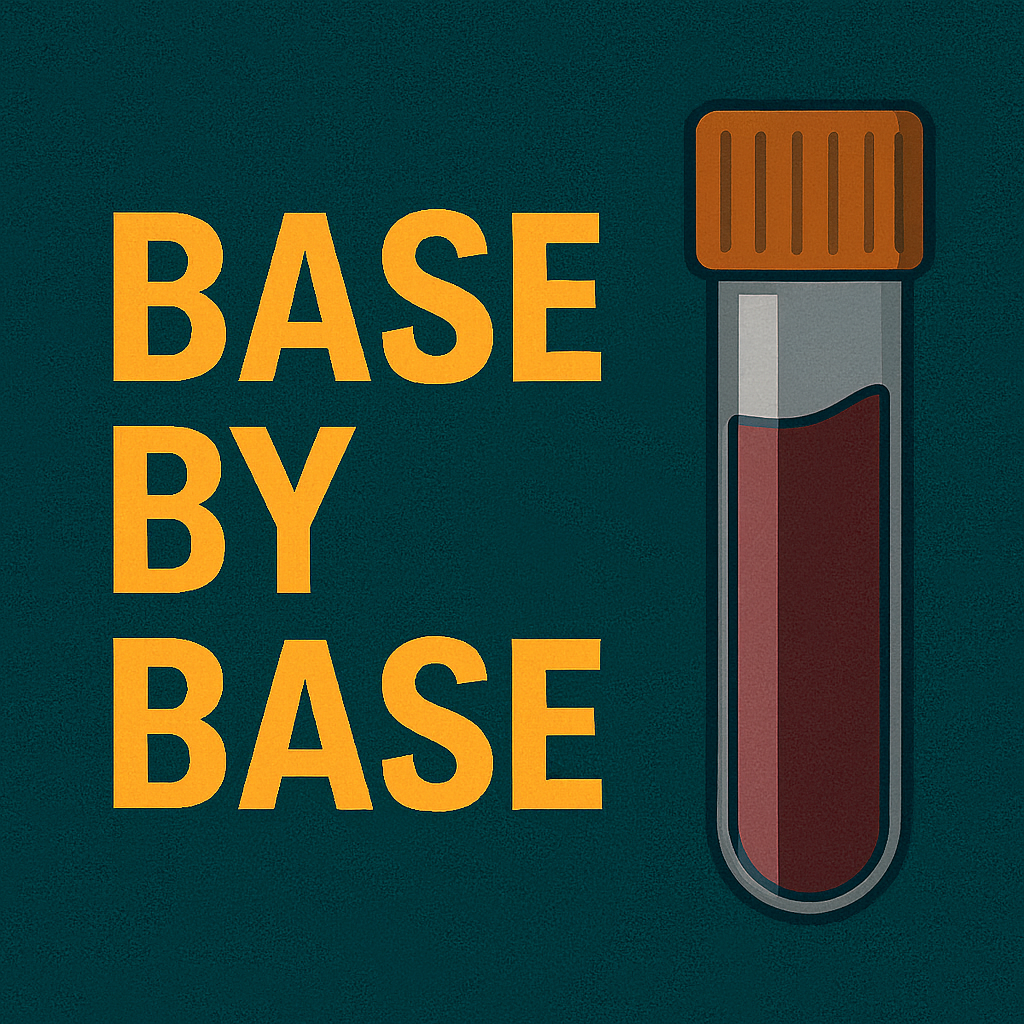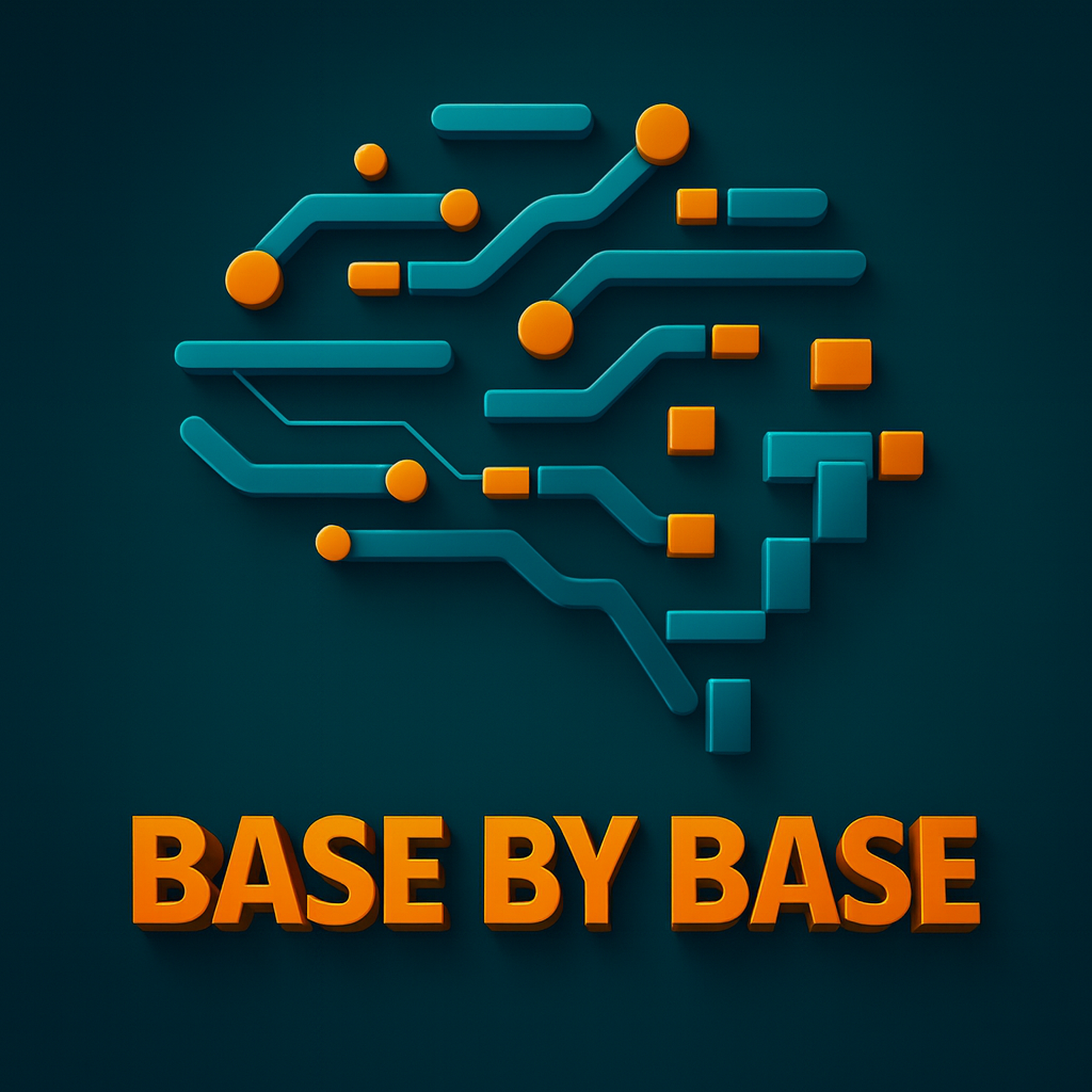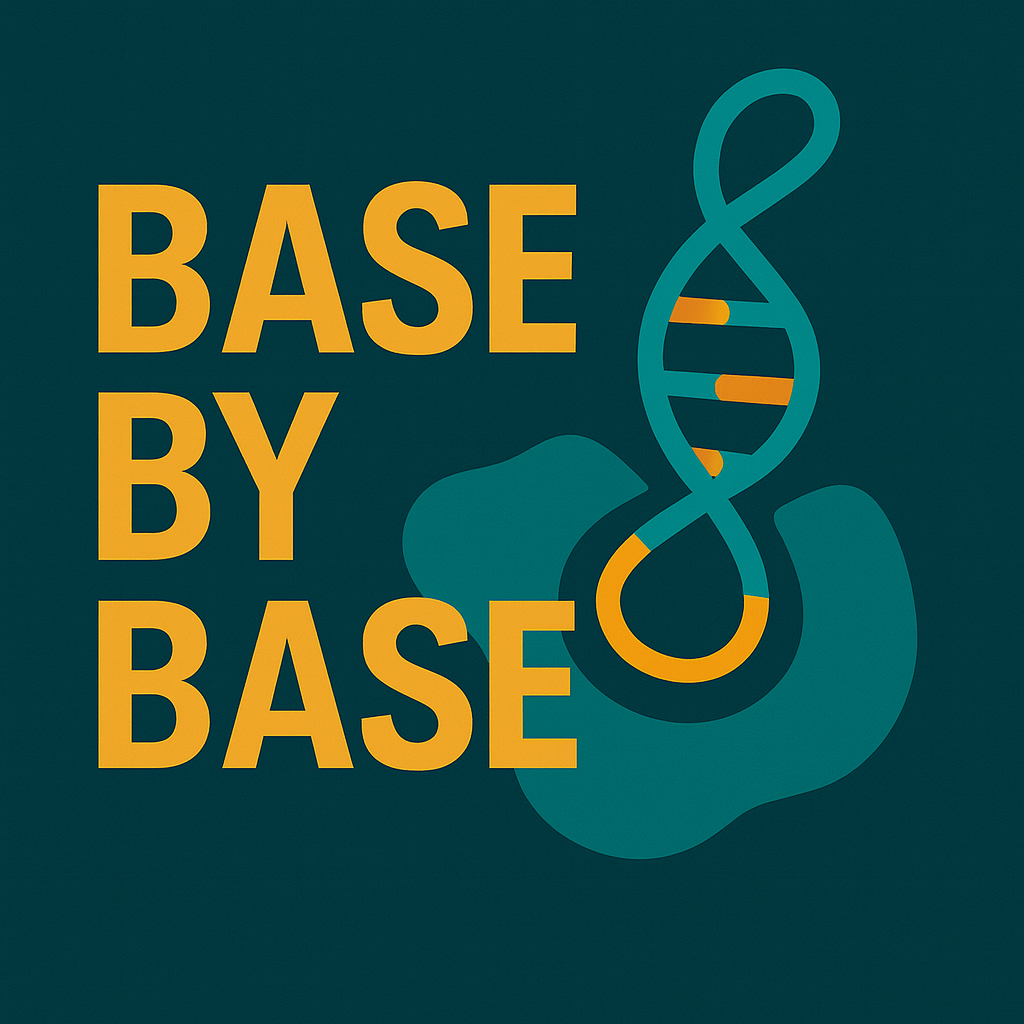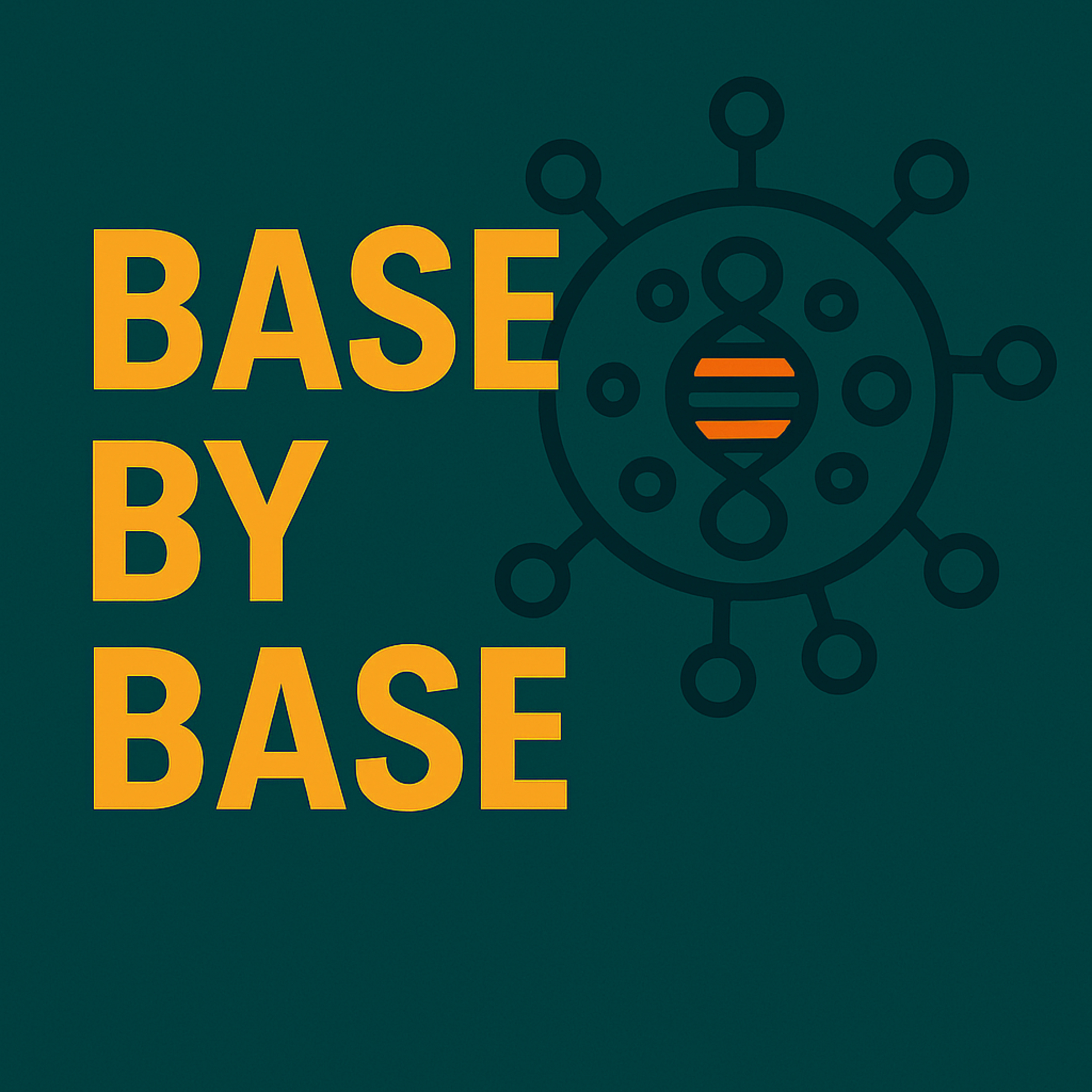Episode Transcript
[00:00:00] Speaker A: Welcome to base by base, the papercast that brings genomics to you wherever you are.
So imagine the scenario. A cancer patient, they really need the next step in their treatment, but everything's on hold. Why?
Because they're waiting on the tumor's genomic profile, you know, the map that guides the next targeted therapy. But the saml, they have the standard tissue biopsy. Maybe it's years old, or the DNA is degraded, or maybe the sequencing just failed. And this happens more often than you think, Our sources are saying, what, up to 10% of these standard tissue samples, they just fail analysis, Especially the really old ones.
[00:00:35] Speaker B: Yeah, and if you're that patient, a 10% failure rate feels like 100%. It means delays, maybe treatment guesses. Or another invasive biopsy.
[00:00:44] Speaker A: Exactly. It's a real bottleneck. But what if. What if there was a way around that? What if you could get that genomic profile automated, done right there near the patient and fast, like within 24 hours.
[00:00:54] Speaker B: Using just a blood sample?
[00:00:55] Speaker A: Just a blood sample. So this deep dive we're at, a system that aims to make exactly that happen. Decentralized rapid liquid biopsy, potentially boosting success rates and speed in cancer care.
[00:01:06] Speaker B: It's a really interesting validation study, and, you know, we should definitely celebrate the work here. It's a big collaborative effort. Researchers from the Japanese foundation for Cancer Research, the University of Melbourne, a large team, they've really pushed our understanding of how you could actually implement this kind of rapid, decentralized liquid biopsy tech for advanced solid tumors. A really practical step forward.
[00:01:31] Speaker A: Okay, so let's unpack this a bit. We sort of touched on it, but why is this decentralized idea so necessary? What are the core problems with the standard tissue approach?
[00:01:42] Speaker B: Well, you hit on some key ones. Tissue profiling is the gold standard historically, but it does have real limits. First, reliability, that failure rate. You know, sometimes there just isn't enough DNA or poor quality from older archive blocks. And second, relevance. A single tissue sample is just. It's one snapshot in time. Cancers evolve, Right?
So that single sample might not show the full picture, the tumor heterogeneity, or crucially, the new mutations that pop up later, maybe due to treatment.
[00:02:10] Speaker A: Which is exactly why everyone's so interested in a liquid biopsy.
[00:02:14] Speaker B: Right?
[00:02:14] Speaker A: Looking at that cell free DNA, the CF DNA, and specifically the circulating tumor DNA or CT DNA that's floating in the blood plasma.
[00:02:23] Speaker B: Exactly. It's minimally invasive. You can do it repeatedly for real time monitoring, and it might. Might give you a broader sense of the tumor's genetic landscape.
[00:02:31] Speaker A: But there's been a catch.
[00:02:34] Speaker B: Traditionally, even these CFDNA tests needed to be sent off to big central labs. That means special handling, shipping, logistics and time it delays getting that crucial turnaround time the TA down. So this study tackled that directly. Can we bring the sequencing capability closer right into the clinical setting?
[00:02:53] Speaker A: Okay, so the mission was basically can this decentralized system work reliably in a clinical context? What specific tech were they testing?
[00:03:00] Speaker B: They focused on one particular setup. It's an automated NGS assay called the on kind precision assay GX OPA for short. And it runs on the ion torrent genexus sequencer.
[00:03:10] Speaker A: The genexus? Yeah, that's the lab. And a Boggs idea?
[00:03:13] Speaker B: Pretty much, yeah. It automates almost everything. Prepping the DNA library from the plasma, the sequencing itself, even the initial data analysis. And the big goal is speed aiming for that 24 hour turnaround. Wow. The OPA panel they used targets 50 key pan cancer genes. It looks for different types of mutations, substitutions, copy number changes, fusions, the main culprits.
[00:03:35] Speaker A: And they didn't just test it in a vacuum. Used a pretty large realistic group of patients and compared it head to head.
[00:03:41] Speaker B: That's right. They looked at 298 patients, all with advanced solid tumors. They ran the OPA system on their plasma CF DNA. Then critically, they compared those results to what they found in the patient's own matched tumor tissue samples.
[00:03:54] Speaker A: Okay.
[00:03:55] Speaker B: And those tissue samples were analyzed using a well established FDA approved test, the Foundation One CDX or F1CDX.
So a solid benchmark for comparison.
[00:04:04] Speaker A: Now you mentioned something earlier that sounds really important here. The time gap between when the tissue was taken and when the blood was drawn. For this study, it was significant.
[00:04:12] Speaker B: Hugely significant. And deliberately so. The median time interval. 530 days.
[00:04:18] Speaker A: Wow. Nearly a year and a half.
[00:04:19] Speaker B: Yes. That's not an accident. It mimics what often happens in the clinic. You're working with an older archived biopsy. And importantly, during that gap, almost 60, 59% to be exact of these patients had received treatments like targeted therapy or immunotherapy.
[00:04:37] Speaker A: Ah, so their cancers might have changed in response to treatment.
[00:04:40] Speaker B: Precisely.
Makes this cohort perfect for seeing if the liquid biopsy can pick up new mutations. Like acquired resistance mutations that wouldn't be in the old tissue sample.
[00:04:49] Speaker A: Okay, one more methodology point before we get to the results. This filtering step. Why couldn't they just sequence the plasma DNA and call it a day?
[00:04:56] Speaker B: Ah, yeah, that's crucial. It's because of something called Clonal hematopoiesis or ch.
[00:05:01] Speaker A: Ch. Right.
[00:05:02] Speaker B: Basically, as people age, their normal blood stem cells can pick up mutations. Some of these mutations can be in the exact same genes that are important in cancer, like TP53.
[00:05:11] Speaker A: So you might see a mutation in the blood plasma that isn't actually from the tumor at all.
[00:05:16] Speaker B: Exactly. It could just be from normal blood cells. If you don't filter those out, you risk misinterpreting a C8 signal as a tumor mutation, maybe even leading to the wrong treatment.
[00:05:26] Speaker A: So how did they filter?
[00:05:27] Speaker B: They were careful. They also sequenced DNA from the patient's peripheral blood cells, the normal white blood cells. By comparing the plasma DNA to the blood cell DNA, they could identify and essentially subtract out those non tumoral variants.
Germline mutations. The patient might have a critical quality control step.
[00:05:45] Speaker A: Okay, got it. So the big question then, did it work? This automated, rapid, decentralized system, how did it perform, especially compared to the standard tissue testing?
[00:05:56] Speaker B: Well, first off, in terms of just getting a result, getting sequenced data, it was remarkably successful.
[00:06:01] Speaker A: Okay.
[00:06:02] Speaker B: The success rate for the CFDNA using the opogenexis system was 99%. They got usable results from 295 out of 298 samples.
[00:06:10] Speaker A: 99%. That's much higher than the tissue rate you mentioned earlier.
[00:06:13] Speaker B: It is. In the same cohort, the success rate for the tissue analysis was 96%. So right away, the liquid biopsy approach basically eliminates that sample failure problem for nearly everyone.
[00:06:24] Speaker A: And they figured out why those tissue samples failed too, didn't they?
[00:06:27] Speaker B: They did, yeah. It correlated strongly with age. The tissue samples that failed analysis were significantly older. Median age for failed tissue was over 1500 days. That's more than four years old.
[00:06:39] Speaker A: Wow.
[00:06:40] Speaker B: Compare that to the successful tissue samples, which had a median age around 500 days. So it really underscores the value of CFDNA when you're dealing with those very old archived tissue blocks where the DNA might be degraded.
[00:06:53] Speaker A: Okay, so it's reliable, but did it find clinically relevant information, stuff doctors can actually use?
[00:06:58] Speaker B: Yes, absolutely. They looked for alterations that are known to be targetable with drugs or indicate resistance. Things classified on scales like OnCOKB level 1 to 3A or R1. They found these actionable alterations in 18% of the whole group. And it varied by cancer type, as you'd expect. For instance, targetable alterations were found most often in breast cancer patients, 45% of them. And resistance alterations were most common in colorectal cancer, about 40%.
[00:07:22] Speaker A: Interesting. Now, you mentioned the Overall concordance, the match between tissue and plasma was 72%.
But given that huge time gap, 530 days, and the fact the tissue often failed, why even compare them? Why does that 72% matter if the tissue is potentially outdated or failed?
[00:07:41] Speaker B: That's a really sharp question. And it's not about saying the liquid biopsy should perfectly replicate the old tissue. The comparison serves a different purpose. It helps us understand the strengths and weaknesses of the liquid biopsy itself.
[00:07:53] Speaker A: Oh, okay.
[00:07:54] Speaker B: That 72% tells you that generally, if a mutation was present way back when the tissue was taken, the liquid biopsy has a decent chance of picking it up now. But the discordance, the 28% where they didn't match, that's actually just as informative, maybe even more so. It tells us where the technology might struggle or where the tumor has genuinely changed.
[00:08:13] Speaker A: Okay, so let's talk about that discordance. Where did the liquid biopsy biopsy system show limitations? What does that tell us about how to use it best?
[00:08:19] Speaker B: The main limitation really came down to the type of mutation. Concordance was pretty good for the smaller changes. Single nucleotide variants, small insertions or deletions, substitutions in Indels. About 63% of those were found by both methods.
[00:08:33] Speaker A: Okay, that sounds reasonable.
[00:08:35] Speaker B: But when it came to detecting larger changes, specifically copy number variations, or CNVs, where whole chunks of genes are amplified or deleted, the concordance was, well, frankly, poor. Only 12.5%.
[00:08:48] Speaker A: Only 12.5% match for CNVS. That's a huge difference.
[00:08:51] Speaker B: It is. It tells us this specific automated liquid biopsy assay, while great for point mutations, really struggles to reliably detect those big amplification events unless they are present at very high levels in the tumor.
[00:09:04] Speaker A: Why is that?
[00:09:05] Speaker B: It likely comes down to shedding. For the plasma test to see an amplification, the tumor has to shed a lot of that amplified DNA into the bloodstream.
The study found they could only reliably detect CNV amplifications if the copy number was really high. They specified greater than 10 copies.
[00:09:21] Speaker A: So if a patient's cancer is driven by a cnv, especially a lower level one, this rapid plasma test might miss it entirely.
[00:09:28] Speaker B: That's the implication in those cases where a CNV is the key biomarker you're looking for. Think about HER two amplification in breast cancer, for example. Relying solely on this plasma test might not be enough. You might still need reflex testing on tissue.
[00:09:45] Speaker A: And shedding isn't just about mutation type. Right. The study also looked at clinical factors. Did Things like the type of cancer or where it had spread matter.
[00:09:54] Speaker B: Absolutely. Clinical context turned out to be critical for interpreting the results, especially in negative results.
[00:09:59] Speaker A: Okay, like what?
[00:10:00] Speaker B: Well, cancer type was a big one. Colorectal and breast cancers, which are often known to be higher shedders of CTDNA, they showed relatively high concordance rates, around 70%.
[00:10:10] Speaker A: Right.
[00:10:10] Speaker B: But other types, like pancreatic and thyroid cancer, much lower concordance, sometimes below 50.
That suggests those tumors might just shed less DNA into the blood, making them harder to detect via liquid biopsy.
[00:10:23] Speaker A: Tumor burden mattered too, didn't it? Size?
[00:10:25] Speaker B: It did. Patients where the mutations were concordant between tissue and plasma tended to have larger lesions. Median size about 23.5 millimeters. Those where the plasma missed something found in tissue.
Smaller lesions, median around 16.4 millimeters. Bigger tumors seem to shed more detectable DNA.
[00:10:45] Speaker A: And location, location, location.
Even for metastases.
[00:10:49] Speaker B: Yeah, this is quite striking. Where the metastases were located made a big difference. Liver mets, they showed really high concordance, over 84%.
[00:10:56] Speaker A: Wow. Why liver?
[00:10:58] Speaker B: Probably because the liver is highly vascularized. Lots of blood flow, making it easier for a CT and E to get into circulation.
[00:11:04] Speaker A: Makes sense. What about other sites?
[00:11:05] Speaker B: Big contrast. Lung Macassis showed much lower concordance, only about 41.5%. Peritoneal spread around 50%.
[00:11:12] Speaker A: So if a patient has known lung mets and this rapid plasma test comes back negative, you have to be really cautious about interpreting that.
[00:11:20] Speaker B: Extremely cautious. It might be a true negative. Or the tumor just might not be shedding enough detectable DNA from the ones. Whereas a negative result in someone with no liver meds is probably more reliable. Context is everything okay?
[00:11:31] Speaker A: Now let's get to what I think is the most exciting part. The payoff for that huge time gap. The mutations found only in the plasma, the ones the old tissue sample totally missed.
[00:11:41] Speaker B: Right. The plasma exclusive alterations. This is where the real time monitoring aspect shines. They found 63 alterations that were only in the plasma sample, not in the matched historical tissue. This affected 18% of the patients overall.
[00:11:54] Speaker A: And was there a pattern to who had these plasma only mutations?
[00:11:59] Speaker B: A very clear pattern. Remember that nearly 60% of patients had received targeted therapy or immunotherapy in that long interval between tissue and blood draw. Yes. Well, these plasma only alterations were significantly more common in those patients.
24% of the patients who got targeted immunotherapy had plasma only mutations, compared to only 10% of patients who had only received chemotherapy.
[00:12:21] Speaker A: Okay, that difference, 24% versus 10%. That feels really significant. What does it tell us.
[00:12:26] Speaker B: It strongly suggests that the liquid biopsy taken after treatment is picking up mutations that developed as a consequence of that treatment. Specifically acquired resistance mutations.
[00:12:36] Speaker A: So the cancer evolved under the pressure of the therapy, developed new ways to resist it. And the liquid biopsy caught that evolution.
[00:12:43] Speaker B: In real precisely, that old tissue sample. It's ancient history, genetically speaking. For many of these patients, the liquid biopsy provides the current genomic landscape, including those critical resistance mechanisms. And that's information you can act on, immediately switch therapies, maybe enroll in a clinical trial targeting that specific resistance pathway.
[00:13:04] Speaker A: Okay, so let's try to synthesize this. What does this all mean for you, the listener trying to keep up with where oncology is heading?
[00:13:10] Speaker B: Well, first, I think this study gives pretty strong validation. This automated decentralized cfDNA system, the OPA on the Genexus, it's clinically feasible, it works, it delivers rapid results. And crucially, it overcomes that sample failure problem you see with old tissue. 99% success rate. That's huge, right?
[00:13:29] Speaker A: It shows the technology can provide timely genomic data, especially when tissue is hard to get or old or just fails.
[00:13:35] Speaker B: Second, takeaway seems to be about complementarity. This isn't necessarily replacing tissue testing entirely, is it? No, not across the board. It's a powerful complement. It's particularly valuable, as we saw, for tracking how tumors change over time, especially for picking up those acquired resistance mutations after targeted therapies. It adds a dynamic view that tissue alone often can't provide.
But tissue might still be needed, especially if CNVs are the main target.
[00:14:02] Speaker A: And finally, the caveats are really important for using this properly. Interpretation is key, absolutely critical.
[00:14:08] Speaker B: Two main things there. One, you have to filter out those clonal hematopoiesis variants using paired blood cell DNA. Otherwise you risk misinterpreting the results. And two, you always have to consider the CL clinical picture. What's the cancer type? How big is the tumor? Where has it spread? Especially if the liquid biopsy comes back negative. A negative result needs careful thought considering those shedding factors we talked about, like lung mets versus liver mets.
[00:14:32] Speaker A: Which leads to that provocative thought, doesn't it? If you have this capability.
Automated, decentralized, rapid 24 hour turnaround genomic profiling from blood. What does that do for clinical trials?
[00:14:44] Speaker B: Right. Could we dramatically speed things up?
Identify patients with specific, maybe newly acquired resistance MUT patients in near real time and get them on the right trial, testing the right drug for their current tumor profile within days instead of the weeks it might take now?
[00:15:02] Speaker A: It really could change the pace of trial enrollment and drug development.
[00:15:05] Speaker B: Something to Watch this episode was based on an Open Access article under the CC BY 4.0 license. You can find a direct link to the paper and the license in our episode description. If you enjoyed this, follow or subscribe in your podcast app and leave a five star rating. If you'd like to support our work, use the donation link in the description. Thanks for listening and join us next time as we explore more science base by base.
